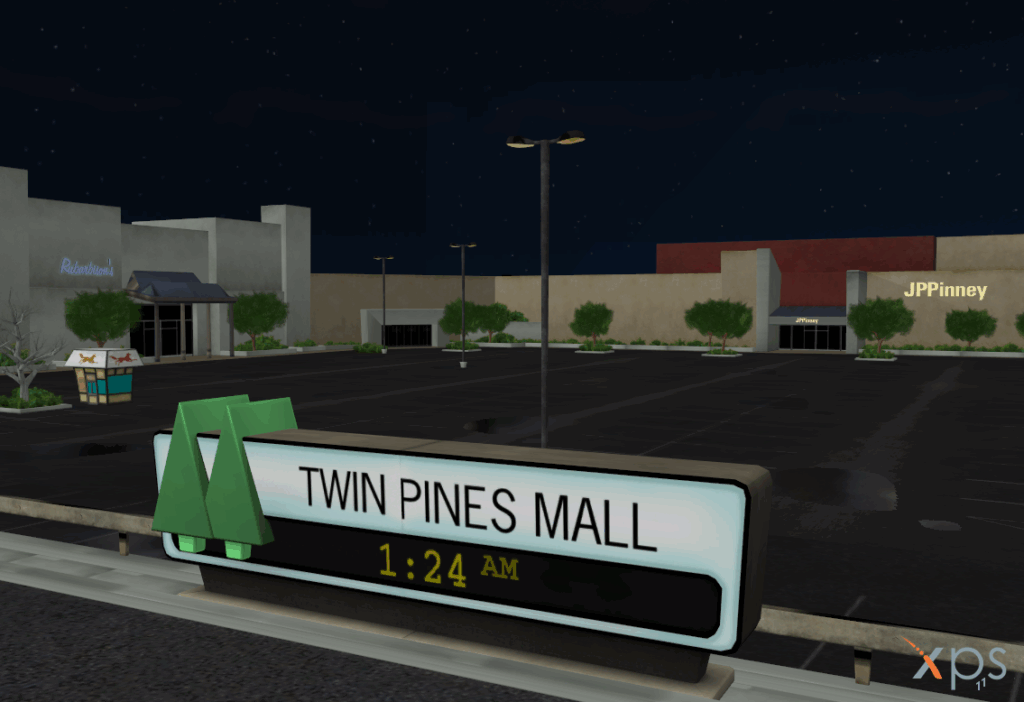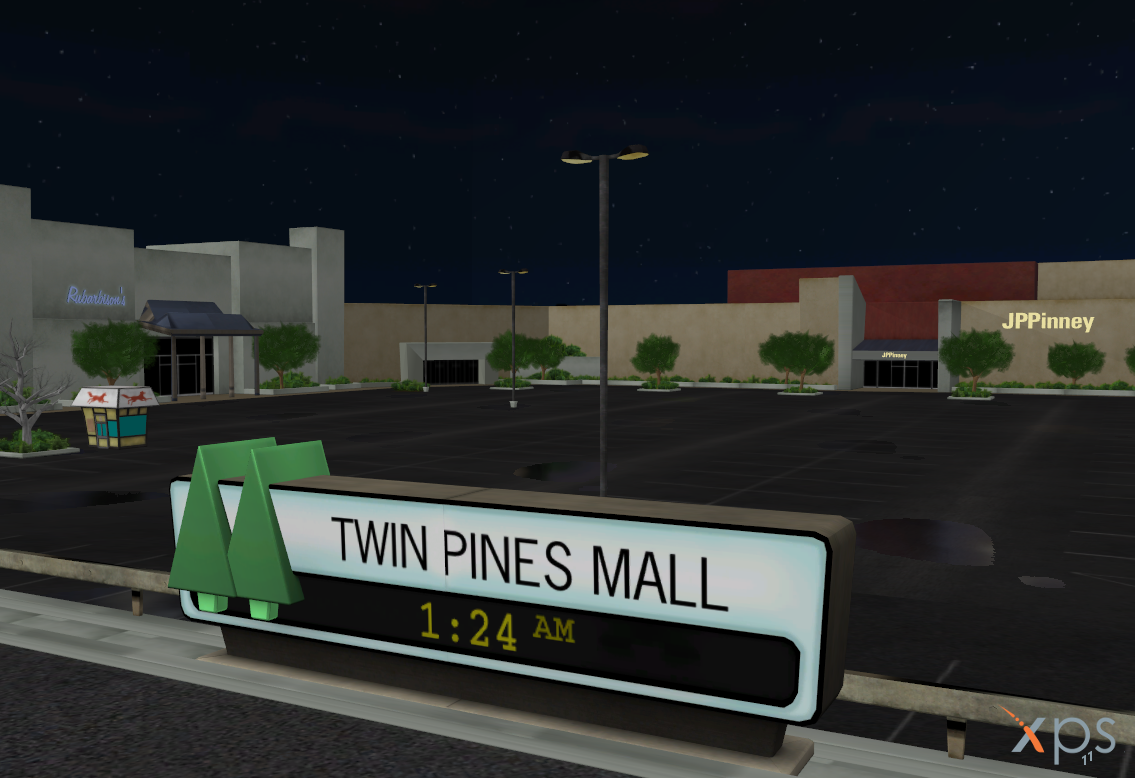
Back to the Future: Unraveling the Mystery of Twin Pines Mall
The 1985 film *Back to the Future* is a cornerstone of cinematic history, celebrated for its time-traveling DeLorean, memorable characters, and clever plot twists. Among the many iconic elements of the movie, the Twin Pines Mall holds a special place. It’s not just a setting; it’s a symbol of causality, change, and the butterfly effect. This article explores the significance of the Twin Pines Mall and its transformation into the Lone Pine Mall, delving into the behind-the-scenes details and its lasting impact on pop culture. The Twin Pines Mall, where Doc Brown first reveals his time machine, is more than just a location; it’s a pivotal point in the narrative that underscores the film’s themes of altering the past and its consequences. Let’s delve into the history and significance of this iconic location.
The Genesis of Twin Pines Mall
The location used for the Twin Pines Mall in *Back to the Future* is actually the Puente Hills Mall in City of Industry, California. This shopping center offered the ideal backdrop for the film’s opening scenes, with its spacious parking lot and recognizable architecture. The filmmakers chose this site because it provided a quintessential 1980s suburban setting, perfect for grounding the fantastical elements of time travel in a relatable environment.
The name “Twin Pines Mall” itself plays a crucial role in the film’s narrative. Marty McFly’s accidental alteration of the timeline when he travels back to 1955 leads him to knock down one of Old Man Peabody’s pine trees. Upon returning to 1985, he discovers that the mall’s name has changed to Lone Pine Mall, reflecting the altered reality. This simple change serves as a powerful visual representation of the consequences of tampering with the past.
The Transformation to Lone Pine Mall
The transition from Twin Pines Mall to Lone Pine Mall is a masterclass in visual storytelling. The change is subtle yet profound, illustrating the ripple effects of Marty’s actions. The altered name serves as a constant reminder of the fragility of time and the interconnectedness of events. The filmmakers cleverly used this detail to reinforce the film’s central theme: even small actions can have significant consequences.
The visual cue of the missing pine tree is also significant. It’s a tangible representation of the change Marty caused, making the concept of altering the past more relatable and impactful for the audience. This attention to detail is one of the reasons why *Back to the Future* has remained so beloved and influential over the years.
Behind the Scenes: Filming at Puente Hills Mall
Filming at the Puente Hills Mall presented its own set of challenges. The production team had to coordinate with the mall’s management and tenants to minimize disruption to shoppers and businesses. They also had to recreate the look and feel of a bustling 1980s shopping center, which involved adding period-appropriate signage, decorations, and vehicles. The filmmakers meticulously recreated the 1980s atmosphere at the Twin Pines Mall to immerse the audience.
The scene where Doc Brown unveils the DeLorean time machine was particularly complex to film. The production team had to ensure the car’s movements were precise and that the special effects were seamless. They also had to manage the crowd of extras who were present during the scene. Despite these challenges, the filmmakers managed to create a memorable and iconic moment in cinematic history.
The Significance of the DeLorean at Twin Pines Mall
The Twin Pines Mall serves as the stage for one of the most iconic moments in cinematic history: Doc Brown’s demonstration of the DeLorean time machine. This scene is crucial because it sets the stage for the rest of the film and introduces the central concept of time travel. The mall’s open space provides the perfect setting for the DeLorean’s dramatic entrance and exit, adding to the excitement and spectacle of the scene. The reveal of the DeLorean at the Twin Pines Mall is a defining moment.
The DeLorean itself is a symbol of innovation and ingenuity, reflecting Doc Brown’s eccentric personality and scientific brilliance. Its sleek design and futuristic features make it an instant icon, capturing the imagination of audiences and solidifying its place in pop culture history. The DeLorean’s presence at the Twin Pines Mall marks the beginning of Marty’s incredible journey through time.
Twin Pines Mall: A Symbol of Causality
The Twin Pines Mall, and its subsequent transformation into Lone Pine Mall, serves as a potent symbol of causality. Marty’s actions in the past directly impact the present, demonstrating the interconnectedness of time and the consequences of altering events. This theme is central to the film’s narrative and resonates with audiences who contemplate the potential ramifications of their own actions. The change from Twin Pines Mall to Lone Pine Mall is a stark reminder of cause and effect.
The film uses this concept to explore the idea of free will versus determinism. Are our actions predetermined, or do we have the power to shape our own destiny? *Back to the Future* suggests that while we can influence the future, our choices have far-reaching consequences that we may not always anticipate. The Twin Pines Mall represents this complex interplay of choice and consequence.
The Legacy of Back to the Future and Twin Pines Mall
*Back to the Future* has had a lasting impact on pop culture, inspiring countless films, TV shows, and other forms of media. The film’s themes of time travel, adventure, and self-discovery continue to resonate with audiences of all ages. The Twin Pines Mall, as a key setting in the film, has also become an iconic landmark, recognized and celebrated by fans around the world. The legacy of Twin Pines Mall is intertwined with the film’s enduring popularity.
The Puente Hills Mall, the actual location used for filming, has embraced its connection to *Back to the Future*. The mall has hosted events and celebrations related to the film, attracting fans from far and wide. This recognition of the film’s cultural significance has helped to preserve the legacy of Twin Pines Mall for future generations.
The Real-World Impact of a Fictional Mall
The fictional Twin Pines Mall has had a tangible impact on the real world. The Puente Hills Mall has become a pilgrimage site for *Back to the Future* fans, who visit to recreate scenes from the film and pay homage to its enduring legacy. The mall has also benefited economically from its association with the film, attracting tourists and boosting local businesses. The Twin Pines Mall, despite being fictional, has brought real-world benefits.
The film’s depiction of the Twin Pines Mall has also influenced architectural and design trends. The mall’s 1980s aesthetic has become a symbol of nostalgia, inspiring designers to incorporate elements of that era into their own work. The Twin Pines Mall serves as a reminder of a bygone era and its enduring appeal.
Twin Pines Mall: More Than Just a Location
In conclusion, the Twin Pines Mall is more than just a location in *Back to the Future*; it’s a symbol of causality, change, and the butterfly effect. Its transformation into Lone Pine Mall serves as a powerful visual representation of the consequences of tampering with the past. The mall’s significance extends beyond the film itself, influencing pop culture, architecture, and even the real-world economy. The Twin Pines Mall will forever be remembered as a pivotal element of one of the most beloved films of all time. The Twin Pines Mall is a crucial element of the film’s narrative, representing change and consequence. Its impact on the film and its audience is undeniable.
The Twin Pines Mall in *Back to the Future* is not just a backdrop; it’s a character in its own right, representing the delicate balance of time and the far-reaching effects of our actions. From its initial unveiling to its altered state as Lone Pine Mall, this location encapsulates the film’s core themes and continues to captivate audiences with its subtle yet profound symbolism. The Twin Pines Mall remains an unforgettable landmark in cinematic history, forever linked to the adventure of Marty McFly and Doc Brown. The Twin Pines Mall, with its subtle transformation, is a key to understanding the film’s intricate plot. The Twin Pines Mall stands as a testament to the power of storytelling and the enduring appeal of *Back to the Future*.
[See also: The History of the DeLorean Time Machine]
[See also: The Science of Time Travel in Back to the Future]
[See also: The Cultural Impact of Back to the Future]

